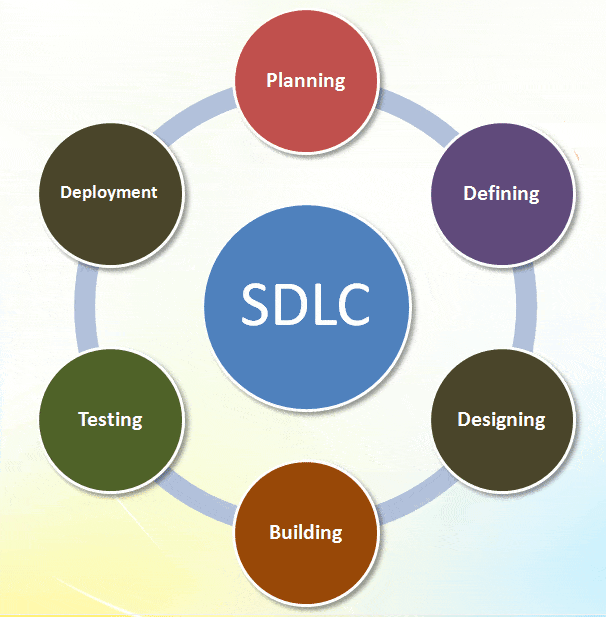What is software development life cycle

ADVERTISEMENT
Table of Contents
Introduction
In software development, software engineering and information systems, the software development life cycle, known as the software development life-cycle, consists of a series of activities beginning with an idea for a product or service, which in turn is backed up by a series of activities aimed at understanding customer needs, developing an appropriate solution, testing and improving the program, and finally integrating it into the company’s product line. The entire life-cycle takes about three years on average. Software is designed, built, and tested during this time. Once released into the marketplace, software is maintained by application support teams for a variety of functions such as bug-fixing and system maintenance. Finally, software is sold to end-users for ongoing maintenance and support.
The Phases of The Software Development Life Cycle
There are four main phases involved in the software development cycle. The first is the “ground floor” stage. This is the foundation of the technology and is considered to be the most “bare bones” stage in the life of the technology. This phase includes bug-fixing and system maintenance. It also includes the generation of prototypes and test cases to demonstrate that the technology works as advertised.
-
The Software Development Life Cycle Begins in the Fresh Project Start. This is the software development life cycle start of a project. In this stage the software engineers begin their search for possible solutions to customer issues. They will need to determine the appropriate technology, or technologies, to solve the customer’s problems and requirements.
-
The Software Development Lifecycle Begins in the Trough of Development. In the early stages of the software development cycle, the developers spend a lot of time evaluating requirements and designing solutions to problems. During this stage, the software developers will implement the systems they have designed. They will use the model and the processes they have defined during the Trough of Development to build the software. During this phase the programmers will continue to tweak the system, bug-fix, and add new features to the software to satisfy the customer needs.
-
The Software Development Lifecycle Starts at the Sprint. After the system and programs are tested and implemented in the testing stages, they will be deployed into production. During this stage of the life cycle the software development team will continue to build user experiences and polish the system until it is ready for prime time. During this stage, the software is in the “user experience” phase. User experience is the most important part of any software development project because it involves the entire lifecycle of the product from initial concept to first sale. During this phase the software engineers will gather usability data, build test cases, document bugs, fix bugs, and polish the system until it meets user expectations.
-
The Software Development Life Cycle concludes with the delivery of the completed program. During this time the software is deployed to users. During this stage the developers will add new functionality, fix bugs, and polish the system until it meets final requirements. User acceptance is an important step in the lifecycle of the product because it is where the developers show the customers how the product fulfills their needs. After this step the process of coding and documentation ceases and the developers return to the sprint planning meetings to fine tune the software and code according to the Sprint schedule. The software is in pre-production when the software is delivered.
-
The sprint planning meeting. At the sprint planning meeting the developers will discuss the customer requirements and discuss what functionality the software must fulfill. They will also discuss the optimization strategy that the team will follow. At this meeting the team will validate the customer requirements and go over the software development life cycles. When the team has achieved each of these stages the software is on its way to being released for production use.
-
The Release: After the development team has completed the requirements and the product has been approved, the release manager sets up the testing team. Testing is performed to verify the functionality of the product. When the testing team has verified the product functionality the team then releases it to production for end-to-end quality assurance. The definition of the development life cycle is at each stage a defined process used to ensure the product meets the requirements of the customer.
Summary
In this article, we discussed the lifecycle of software development in order to help give you a more well-rounded picture of this fascinating field.
Next Steps
If you're interested in learning more about the basics of coding, programming, and software development, check out our Coding Essentials Guidebook for Developers, where we cover the essential languages, concepts, and tools that you'll need to become a professional developer.
Thanks and happy coding! We hope you enjoyed this article. If you have any questions or comments, feel free to reach out to jacob@initialcommit.io.
Final Notes
Recommended product: Coding Essentials Guidebook for Developers



